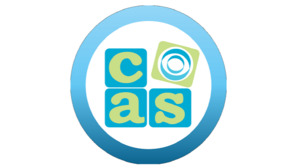
Esta es una credencial profesional que demuestra la competencia de los profesionales en el diseño, análisis y programación orientado a objetos. Quienes se certifiquen comprenderán la perspectiva de programación encaminada a objetivos JavaScript.
El curso está destinado a todas aquellas personas que estén interesadas en conocer más de este programa
Lo que buscamos con la formación es proporcionar a los participantes los conocimientos que les permita obtener la certificación JSA – Certified Associate JavaScript Programmer.
Sección 1: Object-Oriented Programming - Objects
-be able to create objects using a variety of techniques, including literals, constructors and factories;
-be able to refer to object fields, including nested ones, with both dot notation and bracket notation;
-be able to alter objects as required, including by adding, deleting, and modifying properties and methods;
-know how to verify the presence of object fields, enumerate them, and influence the configuration of an object and individual fields (e.g. by blocking the possibility to modify them)
-understand that objects are stored in variables as references and know how this affects manipulating them in practice (e.g. when comparing objects)
-know what the context of a method call is and be able to use the keyword this in practice;
-understand what an object prototype is, what inheritance using a chain of prototypes is and how it can be used, for example, to modify the properties of a group of related objects.
Sección 2: Object-Oriented Programming - Classes
-be able to declare classes, including using the class expression technique, and create objects using them;
-be able to define properties both from the class methods and directly in the class body;
-understand the idea of class inheritance and be able to use it in practice;
-be able to create and use static methods and properties of classes;
-be able to define getters and setters in classes.
Sección 3: Object-Oriented Programming - Built-in Objects
-be familiar with the basic set of built-in objects of the JS language;
-understand the difference between primitive types and their corresponding wrapper objects, know the basic properties and methods of these objects, and be able to use autoboxing in practice;
-be able to handle Array data to an advanced degree, using such methods as filtering, sorting, reducing, mapping, searching, merging, etc.
-be able to use the destructuring assignment and spread operator in their work with arrays;
-know in which situations objects of the Map and Set types can be used for data storage as an alternative to Array and Object, declare them, and manipulate their elements;
-understand the JSON format and be able to convert objects and arrays to and from this format;
-be able to use the methods provided by the built-in Math object to perform basic mathematical calculations;
-be able to take advantage of basic regular expressions (using the RegExp type) to parse character strings;
-be able to extend the built-in JS types with new properties and methods.
Sección 4: Advanced Functions
-know and be able to use in practice such mechanisms related to functions as: Extended Parameter Handling (default parameter values, rest parameter, spread operator), Recursion (closure, first-class functions), Forwarding calls (apply, call, bind), Decorating functions (wrappers, higher order functions)
-understand the concept of lazy evaluation, and be able to use generators and iterators in practice;
-clearly understand when asynchronous programming techniques should be used;
-know how to use callback functions in practice to solve problems that require asynchronous operations;
-understand the Promise mechanism and be able to use it as an alternative to callback functions;
-understand the operation of the async function in conjunction with the await keyword and be able to use it to handle promises.
Información Adicional
Rango de precios: 501-1000 €
Qué nos diferencia